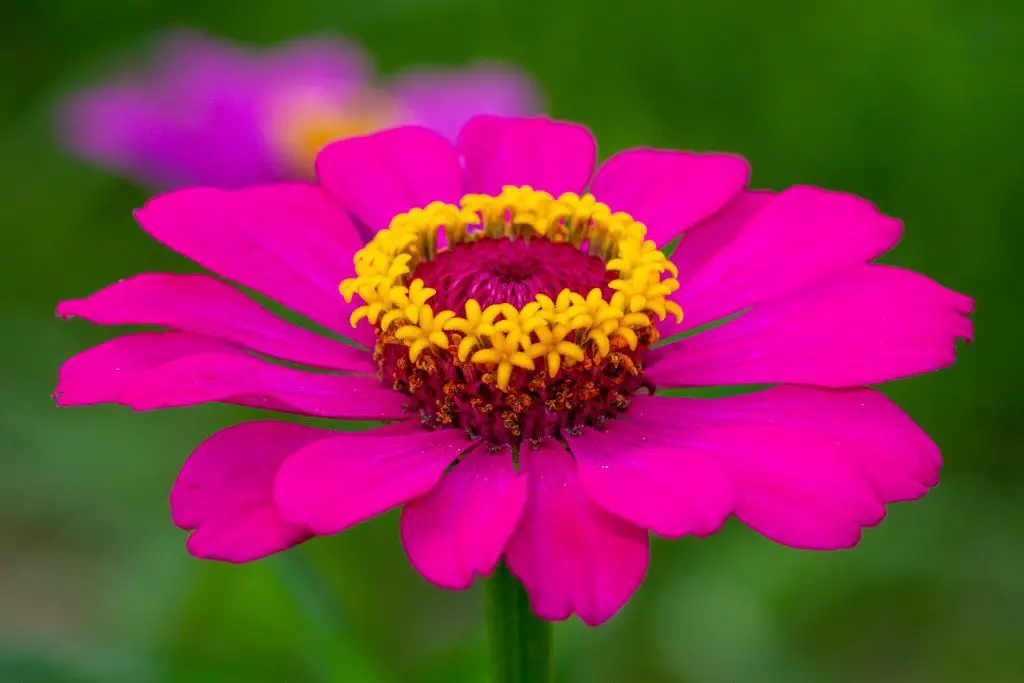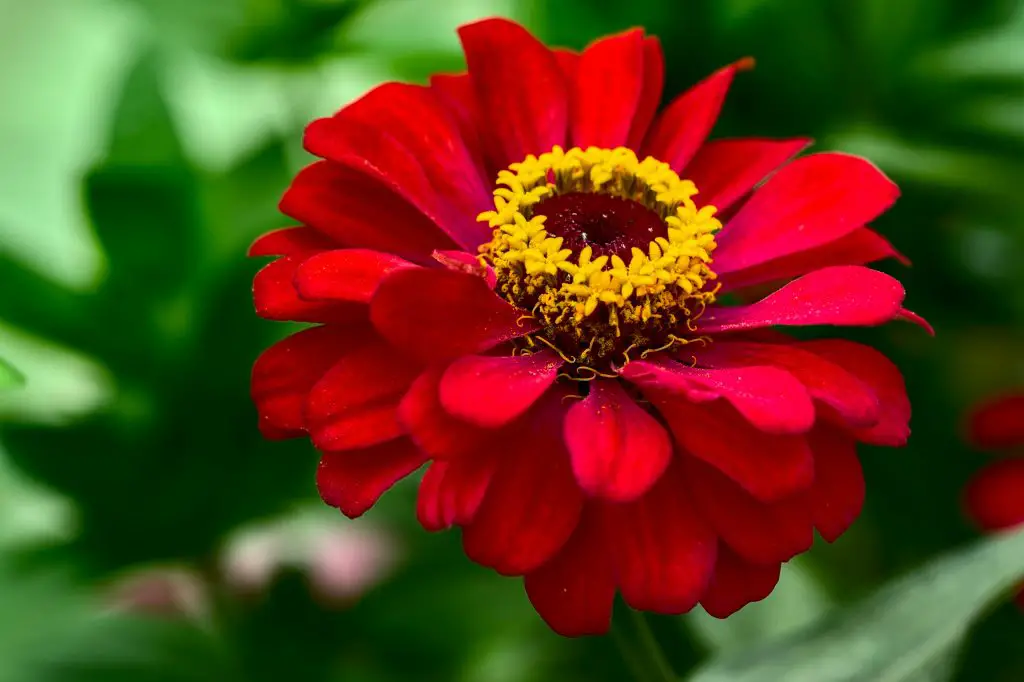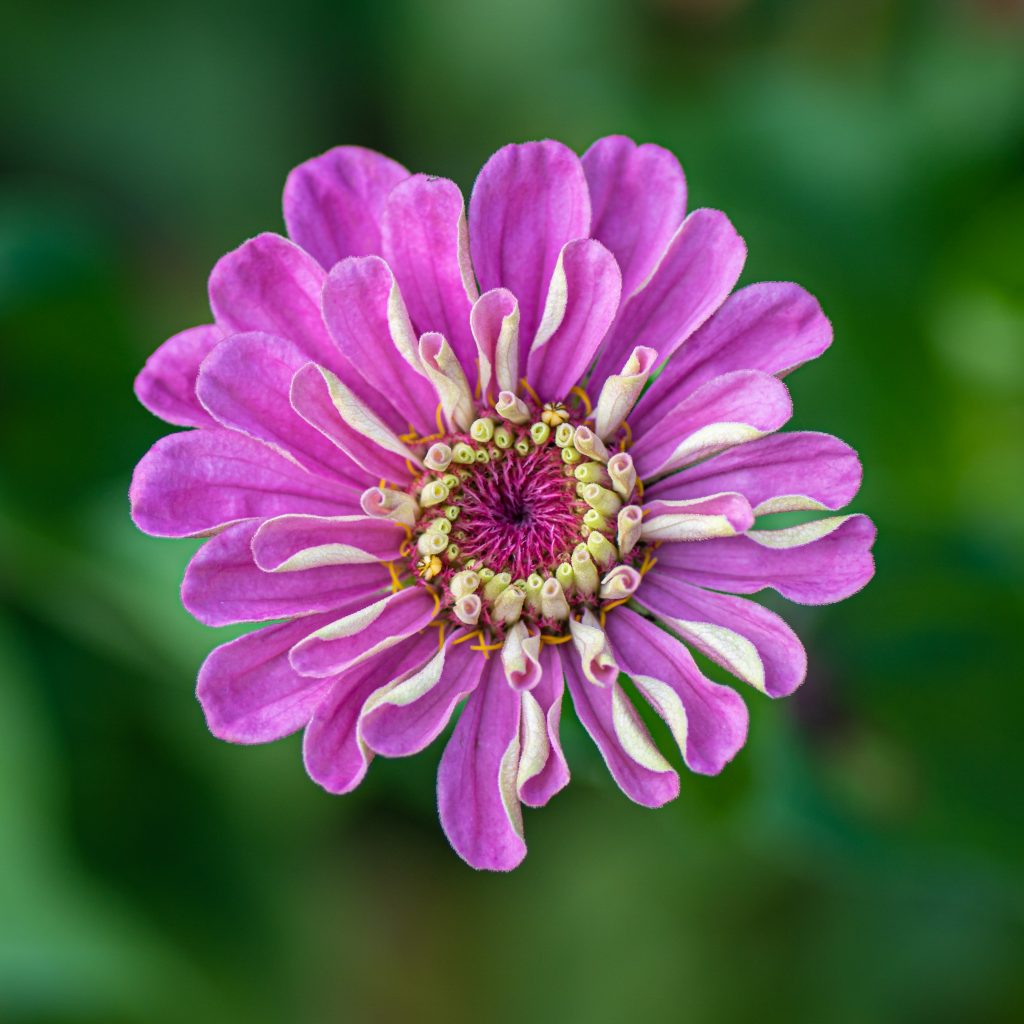Are Zinnias Deer Resistant? Zinnias are one of the most popular cottage garden flowers available. They produce a wide range of stunning flowers that offer a fantastic display throughout the summer. However, if you live in an area with a large deer population the big question is can you grow these plants or will the deer eat the zinnia plants?
Zinnias are considered a relatively deer-resistant plant according to the New Jersey Agricultural Experiment Station. Zinnias are rated as being “seldom damaged by deer” which indicates that the deer will occasionally eat the flowers if there isn’t a lot else on offer at the time.
Additionally, rabbits do not particularly like Zinnia either which means that they can be planted in a garden where both deers and rabbits are frequent visitors, however, to avoid the potential for any damage it is advisable to put in place some deterrence to encourage the critters to look elsewhere for food.

What Can You Do To Deer Proof Your Garden?
There are a number of strategies that can be used if you are having problems with deer on your property. By far and away the most effective but also the most expensive is to exclude the deer and rabbits entirely from your garden.
Build a fence
To do this the fence that you need to erect needs to be approximately 8 ft tall. This may seem excessive, however, there have been studies conducted with whitetail deer which indicates that the vast majority of the population can clear a fence with a height of 6 ft.
At 7 ft, the number reduces significantly which can clear the fence and at 8 ft the fence is tall enough to act as a deterrent to avoid having the deer attempt to jump the fence at all. To read more about this study click here.
If you also want to stop rabbits as well as deer it is advisable to dig the fence a foot or two into the ground as this will prevent rabbits from burrowing under the fence and entering the property.
Put Plants In The Deer Do Not Like To Eat
The other strategy that can be used is to plant things that deer do not like to eat particularly at the edge of the property which is the area that the deer first encounter.
As a general rule deer do not like plants that are fragrant, poisonous, or thorny. However, this is only a general guide as deer will eat things like the young shoots of roses quite happily. To get a more complete list try visiting the New Jersey Agricultural Experiment Station website which contains a large list of plants with the deers’ preference towards eating them.
As you will see from this list there is a huge choice of plants that can be used in your garden that dear generally don’t like that much and even ones that can be planted strategically to repel deer. Examples of this include lavender and fragrant herbs such as oregano rosemary and thyme.

Use Chemical Deer Repellent
In addition to using fragrant plants, you can also use a chemical deer repellent which will help to keep the animals away. The deer repellent needs to be applied every 1 to 2 months directly to the plant that is at risk.
This application needs to occur on a dry day when there is no risk of rain over the next few hours as this will avoid the chemicals from being washed straight off the plant. To see the latest price for deer repellent click here.
Use Mechanical Deer Repellent Devices
The other option is to use devices that physically repel a deer by scaring them or deterring them with ultrasonic sounds. Most of these devices are motion activated and will cover a relatively small area effectively as such they tend to need to have multiple units if you want to effectively protect the entire garden.
The most common mechanical device is a motion-sensitive sprinkler system which typically has a detection range of approximately 40 ft depending on the particular unit. To see the latest price on Amazon click here.
To increase the range of coverage you can also try purchasing an ultrasound unit which generally has a coverage range of more than 100 feet. However, both these options will not only repel dear but also a range of other animals including domestic cats and dogs which means that these devices would generally not be recommended for pet owners. To see the latest price click here on Amazon.

How To Grow Zinnias
Once you have your strategy for protecting the plants you’re in a position to actually plant in the garden. Zinnias can be purchased as seedlings from a garden center or alternatively, you can grow them from seed which will be much more cost-effective.
As Zinnias are annual plants they can be grown in a wide range of climates from Zone 3 to Zone 10. The seeds can be planted into seed trays or directly into the garden. I personally prefer to plant in seed trays rather than directly into the garden because it allows me an opportunity to establish the plants before the pests get access to them which gives the best possible chance of survival.
Irrespective of where you are planting the seeds they should be planted at a depth of approximately a quarter of an inch into soil that is rich moist and free draining. If your soil is a little bit nutrient-deficient it is advisable to dig in a bag of compost before you plant.
The plants should be spaced approximately 1 ft apart in a sunny location to provide them with enough space to grow as the plants will reach a height of approximately 3 ft through the course of the season.
Once planted the seedlings will take approximately 10 days to emerge from the soil so if you are planting outside it is advisable to spread snail pallets around the area you are planting at the same time that the seeds go in as the new seedlings will be highly susceptible to attack early on.
It is also advisable to mulch the area well to kept that area free of weeds to minimize competition for the Zinnias. Once the seedlings emerge it is important to water them regularly to ensure that was soil remains moist. However, as these plants are susceptible to fungal diseases it is important to water the soil around the plants rather than on the plants themselves.
Zinnias will typically take between 60 and 70 days from the date that the seed is planted to produce its first flowers to ensure that it continues to flower throughout the season it is advisable to regularly deadhead the plants until the first frost hits in autumn.
I hope you found this blog useful and have success growing zinnias. If you have any questions please leave them in the comments section below.
Relevant Articles
How High Can A Deer Jump? (And What Type Of Fence Do I Need To Build To Keep Them Out)
Is Lavender Deer Resistant? Can You Use Them To Protect Your Garden
When Should I Plant Winter Vegetables?
Do I Need A Liner In My Raised Bed?
